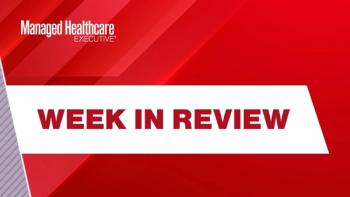
Patient-directed healthcare calls for new roles
The aging baby-boomer population most likely is driving the health consumerism trend. Baby boomers now have more disposable income than any similar age group in the history of the United States. Now, as patients or care-providers for children and elderly patients, baby boomers are visiting physician offices armed with more information about medical conditions, but also are dissatisfied with the "interruption" to their lives caused by long waits in doctors' offices. They also are more interested in managing their own health and are investing heavily in health management aids including health club memberships, vitamins, herbal medicines, fad diets-virtually anything that will prolong or provide a healthier life.
The aging baby-boomer population most likely is driving the health consumerism trend. Baby boomers now have more disposable income than any similar age group in the history of the United States. Now, as patients or care providers for children and elderly patients, baby boomers are visiting physician offices armed with more information about medical conditions, but also are dissatisfied with the "interruption" to their lives caused by long waits in doctors' offices. They also are more interested in managing their own health and are investing heavily in health management aids including health club memberships, vitamins, herbal medicines, fad diets-virtually anything that will prolong or provide a healthier life.
While many physicians, especially general practitioners, have recognized a change in patient concerns and needs, they are facing their own dilemma. As a result of the managed care environment in which they reside, many general practitioners are now seeing more patients but making less money, which leads to dissatisfaction.
Likewise, the payers have their own concerns and needs regarding the delivery of healthcare. They are facing a growing urgency from employers, patients and policymakers to reduce the cost of healthcare to the public while continuing to provide best-in-class healthcare to patients. Payers routinely have to make coverage and reimbursement decisions on new diagnostic tests and new therapies, developed by innovative device manufacturers and pharmaceutical companies striving to wedge new market share and to sustain profits and returns to investors.
While many have predicted this definite shift in the healthcare delivery markets, skeptics remain. However, an evolving body of evidence in the commercial sector lends credence to this trend. One such development is the Minute Clinic, a new medical clinic that is popping up inside Target stores, Cub Foods and strategically located commercial offices, throughout Minnesota and other states. These clinics diagnose and treat common respiratory infections, urinary tract infections, conduct screenings for cholesterol, pregnancy and HbA1c, and administer vaccines. Because these clinics can be supported by regional payers, members receive these services by paying a small copay. Of course, the key features of the clinic are access and convenience.
Not surprisingly, the advance of new technologies fuels the rapid growth of this segment. Wireless technologies are enabling high-tech monitoring of patients in remote settings. Many new wireless monitoring devices focus on monitoring high-risk cardiovascular patients and diabetes patients. However, the rapid growth of new, non-intrusive, sensor-based monitoring technologies will enable real-time monitoring of vital signs and provide tracking of elderly, infirm patients. The advance of biomarker-based diagnostics and molecular diagnostics, particularly the transition to micro-sized or implantable diagnostic devices, will enable therapeutic drug monitoring of common but difficult to manage therapies such as the blood-thinning agent Coumadin.
SOURCES OF CONCERN
Despite the attraction surrounding new market opportunities suggested by this trend, there are a number of complicating factors.
First, the medical device manufacturers are not prepared with the proper products to meet this new demand. Their products have been rigorously designed and tested for FDA approval for clinical settings, whether they are hospital settings or physician offices. Virtually none of the current products are designed or approved for home use, and in many cases diagnostic tests often are not suitable for use by non-physician providers.
Another complicating factor is reimbursement. The current reimbursement pathways are not aligned with the services suggested by the patient-directed healthcare trend. In order to support the new network of healthcare delivery, the payers should be willing to consider new diagnostic devices, be willing to consider paying physicians for remote diagnostics and care or be willing to support care delivered at Wal-Mart. Many of the new commercial healthcare endeavors listed above depend on a private pay model, but in order to be successful on a large scale, other payer business models should be contemplated.
Likewise, providers must consider their role in this new healthcare model. Many will be enthusiastic about the opportunity to stabilize and grow income without sacrificing the opportunity to practice medicine.
In order for this new healthcare paradigm to be widely accepted and commercially successful, providers, payers, device manufacturers, government regulators, employers and patients must decide to collaborate and develop the appropriate suite of devices, systems and policies that enable the desired success. As this trend continues to evolve, two key questions emerge.
Newsletter
Get the latest industry news, event updates, and more from Managed healthcare Executive.

















































